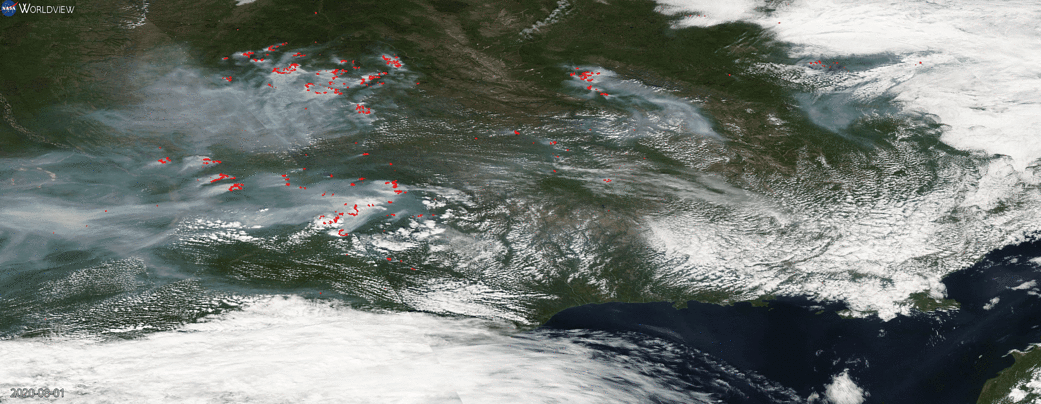NASA’s Aqua satellite has illustrated in this nine image animated GIF that the constant in Siberia these days is smoke and fire. The animated GIF shows images of Siberia from August 1 through August 9, 2020, and it is obvious that the fires continue to burn and the smoke from the fires continue to accumulate, covering the skies, and traveling eastward toward the United States and Canada. This year the Siberian fires have been exacerbated in part by the record-breaking heat in the area with temperatures as high as 100.4 degrees Fahrenheit. Record amounts of carbon is also being released into the atmosphere from the burning of the stores of peat in the Siberian soil, further complicating climate change issues.
NASA’s satellite instruments are often the first to detect wildfires burning in remote regions, and the locations of new fires are sent directly to land managers worldwide within hours of the satellite overpass. Together, NASA instruments detect actively burning fires, track the transport of smoke from fires, provide information for fire management, and map the extent of changes to ecosystems, based on the extent and severity of burn scars. NASA has a fleet of Earth-observing instruments, many of which contribute to our understanding of fire in the Earth system. Satellites in orbit around the poles provide observations of the entire planet several times per day, whereas satellites in a geostationary orbit provide coarse-resolution imagery of fires, smoke and clouds every five to 15 minutes. For more information visit: https://www.nasa.gov/mission_pages/fires/main/missions/index.html
NASA’s Earth Observing System Data and Information System (EOSDIS) Worldview application provides the capability to interactively browse over 700 global, full-resolution satellite imagery layers and then download the underlying data. Many of the available imagery layers are updated within three hours of observation, essentially showing the entire Earth as it looks “right now.” Actively burning fires, detected by thermal bands, are shown as red points. Image Courtesy: NASA Worldview, Earth Observing System Data and Information System (EOSDIS). Caption: Lynn Jenner




























